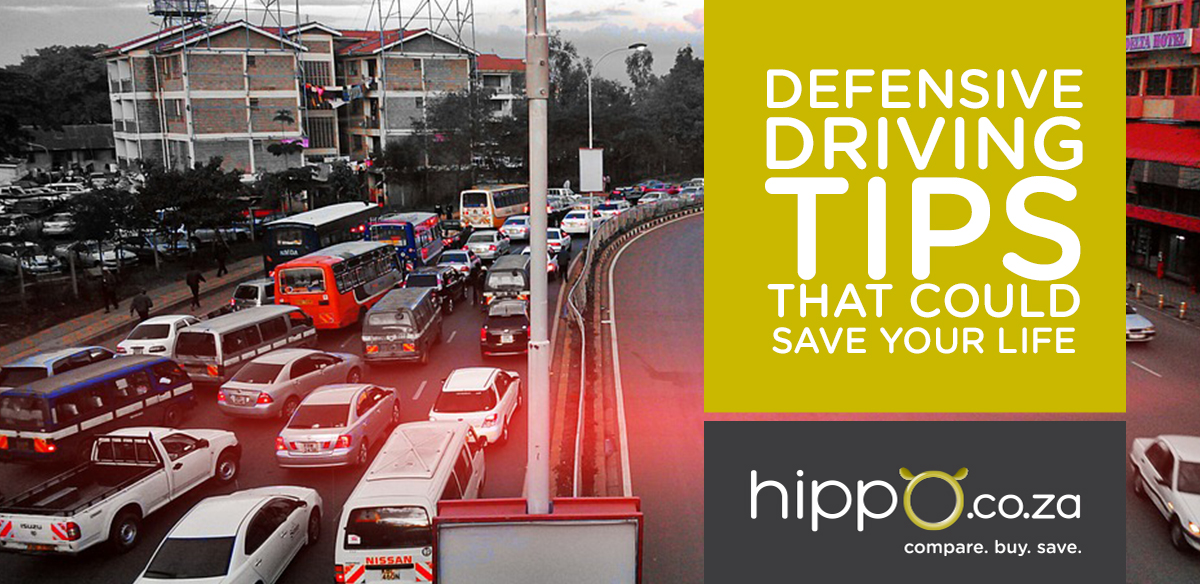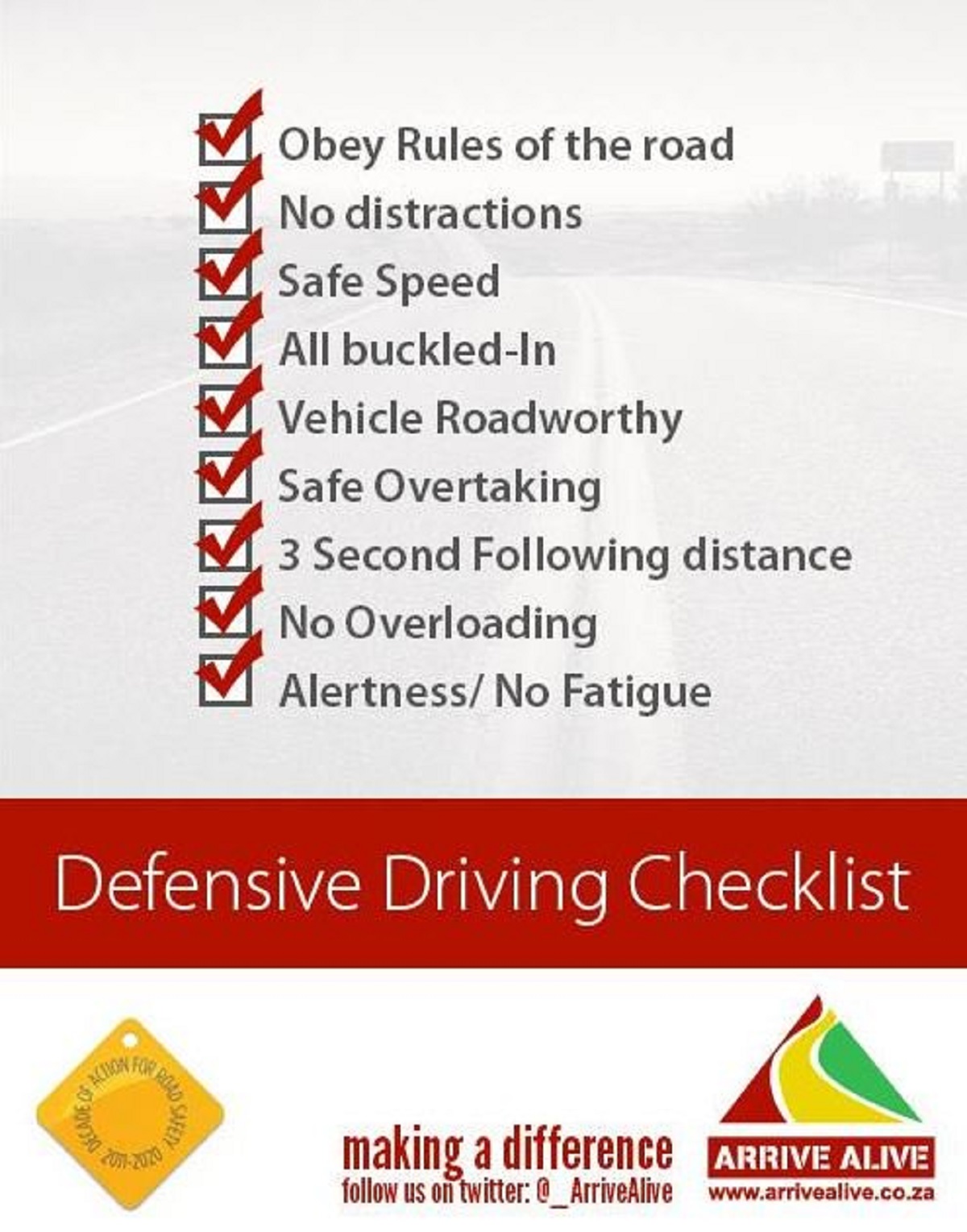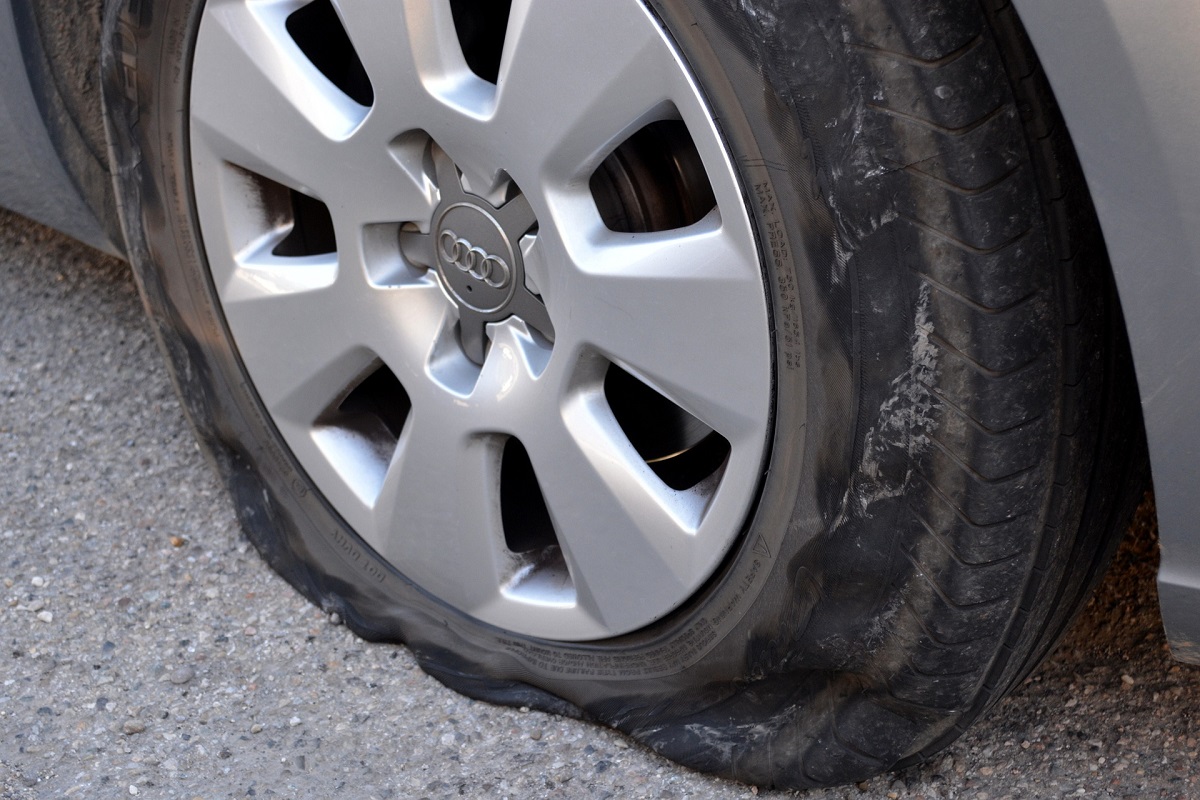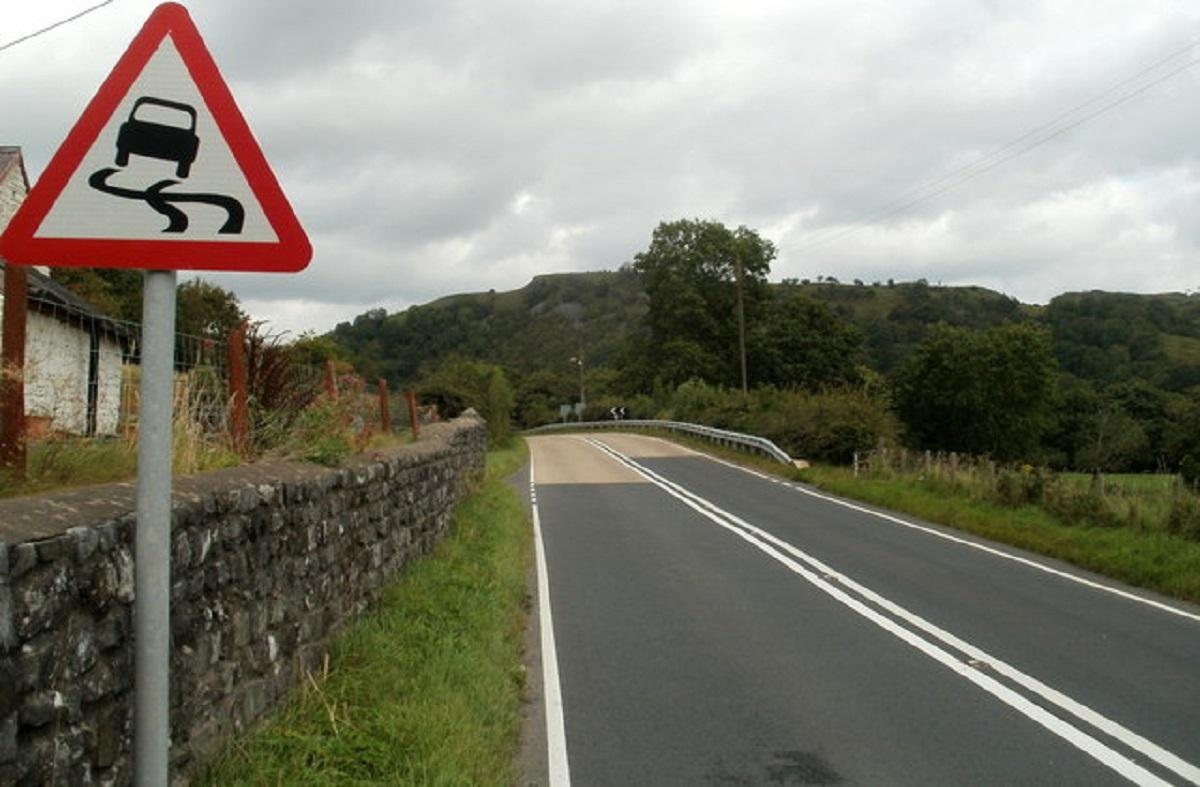Defensive Driving Tips That Could Save Your Life

Successfully operating a vehicle requires a high standard of competency: the ability to plan, anticipate and take suitable evasive action in emergency situations on the road. Whether it's a quick trip to the grocery store or a long distance journey to a favourite vacation spot, we are all exposed to risks such as severe weather, bad road conditions, driver error, and road crime.
This article presents several road scenarios that show the importance of mastering the art of defensive driving. Spotting and avoiding road hazards in time will not only ensure a safe driving environment for yourself and other road users but will also keep your driving record spotless (hint: Car Insurance companies take your driving record in consideration when calculating your premium and many will ask if you’ve had additional training).

Collision course

Scenario: You're driving down a two-way road at night when headlights suddenly appear ahead in your lane. It doesn't look like the other driver will be moving over to the correct side of the road and continues to speed toward you, making a head-on collision imminent.
Defensive driving tips:
Head-on collisions are often the result of distracted driving, exhaustion, intoxication and driver error. When a high-speed crash is imminent, there are a few things you can do to avoid or minimise the effects of a collision:
- React quickly but remain calm to keep control of your vehicle
- The law requires you to flash your headlights or blow the horn to alert the other driver
- Avoid braking hard or yanking the steering wheel to the side of the road.
- Never swerve to the right lane when there is oncoming traffic
- Reduce your speed. If you're going slower than the other vehicle, your chances of survival are greater.
- Steer your vehicle to the left shoulder of the road, stop and prepare for possible impact to the rear of your vehicle.
- Avoid going off the road; however, if this is your only option, direct your vehicle to an off-road object that will inflict the least damage, such as bushes.
- Avoid composing your body in a "brace position" as this can cause serious bodily harm. Ducking forward can move your body out of the safety position needed for the airbags and seat belt. Sitting upright is the correct position for all the safety equipment to work most effectively.
Sources: carinsurance.arrivealive.co.za, defensedriving.org
Potential Hijacking

You and your family are returning home after a night at the movies. As you navigate the streets, you suddenly realise another car has been following you the entire time.
Defensive driving tips:
- According to Arrive Alive, most hijackings occur in the driveways of residential areas.
- When driving home, be vigilant at all times. Avoid things that could distract you such as other passengers, the radio and your cellphone.
- Keep an eye on the rear view mirror to check if you are being followed. If it appears that someone has been trailing you, adjust your rear-view mirror toward the car behind you to alert the would-be attackers that you are aware of them.
- If they keep on following you, drive to the nearest police station or a busy area. The same applies when you notice dodgy characters hanging around your house.
- When your vehicle moves toward a red traffic light, reduce your speed so that you only arrive at the stop line when the robot turns green.
- When stopping behind another vehicle at an intersection, keep half a vehicle length between you and the vehicle in front to allow for a quick getaway in the event of a hijack.
Source: Wheels.24.co.za
Tyre burst

Scenario: You're traveling down the freeway, when an explosive sound suddenly comes from the front of your vehicle. At the same time, your vehicle starts to feel like it's dragging while pulling to the left side. A one-second reaction could be the difference between life and death. What should you do?
Defensive driving tips:
A tyre blow out is likely the result of excess heat and poor maintenance, combined with high speeds. Here's what to do when a tyre burst occurs:
- The first step to maintain control of your vehicle is to keep calm. Do not slam on the brakes
- Hold the steering wheel firmly in the 10-2 position
- If it feels like the car is swerving, tap the accelerator gently to hold your current speed. This may help you keep or regain control of the vehicle
- Release the accelerator smoothly to let the vehicle slow down naturally
- Keep the steering wheel straight in the lane you're driving, while checking the rearview mirror
- Apply the brakes smoothly as you steer the car to a safe spot on your side of the road using your indicators and hazard lights
- Before getting out of the vehicle, make sure it is safe to do so. To change the tyre, exit the vehicle from the side away from traffic. Should you have the need to call for roadside assistance, remain in your car until help arrives
Source: roaddriver.co.uk
Skidding out of control

Scenario: You're on your way to visit a friend on a rainy afternoon. As you round a bend in the road, the rear of the car begins to fishtail across the wet surface of the asphalt, causing you to lose control.
Defensive driving tips:
As with any other emergency situations, the first step in the process of getting out of a skid is to remain calm. You should then be able to carry out the following:
- Remove your feet from the accelerator and brakes
- Keep both hands firmly on the steering wheel
- Avoid steering to the same side the rear of the car is skidding towards
- Focus on a visual target down the road and gently steer into that direction or the direction you actually want the car to go
- As you begin to recover from the skid, gently press on the brakes or accelerator to redistribute the weight of the car across the wheels and help improve the grip of the tyres on the road.
Source: libertymutual.com
Navigating an accident scene

Scenario: You're late for an appointment and as you rush to your meeting, you come across a crash that had happened just a few minutes earlier, and which has turned the freeway into a gridlock at a non-peak traffic time.
Defensive driving tips:
When approaching an accident scene that has already been reported and attended by emergency rescue personnel, drivers should exercise caution at all times as the hold-up can result in secondary accidents.
- Look out for any signs that traffic is slowing down in front of you. Be ready to adjust your current speed
- Depress the accelerator and hover your foot over the brakes as you approach the line-up of brake lights
- Always be attentive to illuminated signs on the freeway warning of accidents ahead. Try to find an alternative route before you reach the accident scene
- Don't wait until the last minute to squeeze into traffic that turns onto an off-ramp. Carefully merge ahead of time
- When driving past the accident scene, follow the instructions by traffic officials and look for signs that direct your course of action.
- Proceed through the scene slowly. Avoid staring at the accident when you should be focusing on the traffic ahead
- Do not make sudden movements with your vehicle
Sources: Arrive Alive, sgplaw.com
Conclusion
With these defensive driving tips, we hope you will be a safer driver on the often unpredictable journey whenever you take to the road. While each situation above will require a different approach to handling them, some basic guidelines to keep in mind are to obey the rules of the road, make sure that you and your vehicle are in good physical condition and be aware of your surroundings at all times. These steps could also ensure that your Car Insurance claim is not rejected should you need to claim, as in the case of driving under the influence.
DISCLAIMER: Hippo.co.za has made this article available as an information resource only, and cannot be held responsible for any harm caused by this article. Readers who follow the advice provided in this article, do so at their own risk.
Hippo Blog Categories

































